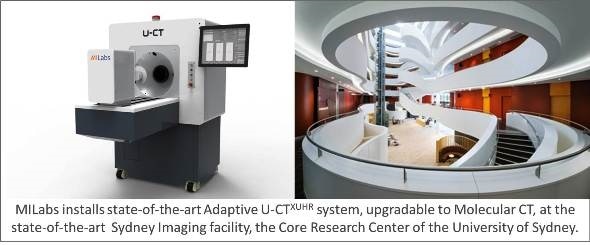Sep 6 2018
MILabs announces that it has successfully completed the installation of its next-generation Adaptive U-CTXUHR at Sydney Imaging, a Core Research Facility of the University of Sydney. Recognizing that excellence in research is increasingly linked to excellence in infrastructure capability, Sydney Imaging selected MILabs X-ray CT system for its unprecedented dose-efficiency for in vivo imaging of a wide variety of in vivo animal models of human diseases, from mice to rabbits. The system offers a unique combination of very low-dose, fast and high-resolution diagnostic X-ray CT and can, at any time, be upgraded to molecular CT imaging.

Prof. Fernando Calamante, Director of Sydney Imaging explained:
This new Adaptive CT system represents a significant contribution to our expanding set of biomedical imaging equipment at Sydney Imaging, and provides a powerful complementary tool to drive innovation and translational research. It reflects the University’s long-term strategic plan of providing state-of-the-art research infrastructure, as platforms for collaboration.”
Prof. F. Beekman, CEO/CSO MILabs B.V. added:
We are delighted to add Sydney Imaging to our fast growing user-base of Adaptive CT systems. We are looking forward to work with this core biomedical imaging facility to further accelerate its research programs, and to further adapt the system for molecular imaging applications if the need develops.”
Trent Warburton, Managing Director at TrendBio, MILabs’ exclusive Australian distributor, stated:
We are particularly pleased to be able to provide the MILabs advanced preclinical imaging technologies to the Australian scientific community and in particular into a core research facility at the University of Sydney.”
MILabs Adaptive CT combines cutting-edge CMOS technology with a thick scintillation layer to efficiently convert low-dose X-rays to CT images. With dual-gating capabilities and on-the-fly readout, the system sets new low-dose benchmarks without compromising image quality for all in-vivo CT imaging applications.